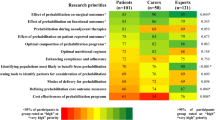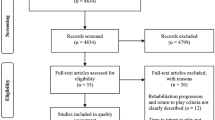Abstract
The fellowship examination of the European Board of Orthopaedics and Traumatology (EBOT) has been designed to standardize and improve the level of orthopedic training in Europe. The examination covers all main areas of orthopedic surgery including the upper limb, lower limb, spine, pediatric orthopedics, and trauma, as well as basic sciences. The examination consists of two sections. Section 1 is based on 100 multiple-choice questions, and section 2 is an oral examination. The number of participants has been steadily increasing during the last 10 years signifying its role in the development of a uniform level of training across Europe. The passing rate of the participants has ranged from 50 to 75 % during 2001 to 2013. The EBOT interim examination was introduced in 2011, and it enables the assessment of orthopedic training curriculums for benchmarking purposes and allows correcting the deficiencies of the training programs in different institutions. The EBOT diploma is highly respected across Europe. Although it is not yet considered as a prerequisite to practice orthopedics in Europe, it can be used as a means to show a sound level of knowledge in the rapidly developing field of orthopedics. Future developments of the EBOT examination include a third clinical section performed on a national level.

Similar content being viewed by others
References
Black KP, Alman BA, Levine WN et al (2012) Orthopaedic resident education—it’s a whole new game: “If I’m going to be a spine surgeon, why do I need to learn how to reconstruct an anterior cruciate ligament?”: AOA critical issues. J Bone Joint Surg Am 94:1–8
Bozic KJ, Browne J, Dangles CJ et al (2012) Modern metal-on-metal hip implants. J Am Acad Orthop Surg 20:402–406
European Union of Medical Specialists (2012) http://www.uems.net/. Accessed 24 Sep 2013
Mineiro J (2011) The first decade of the fellowship examination of the European Board of Orthopaedics and Traumatology (EBOT Exam): a prestigious orthopaedic-traumatology qualification in Europe. Orthop Today Eur 1:9
Mineiro J (2012) The EBOT examination in the new format—European board certification. Orthop Today Eur 1:8
The European Board of Orthopaedics and Traumatology (2008) EBOT examination http://www.ebotexam.org/. Accessed 24 Sep 2013
Conflict of interest
The authors declare that they have no conflict of interest.
Author information
Authors and Affiliations
Corresponding author
Rights and permissions
About this article
Cite this article
Mäkinen, T.J., Madanat, R., Kallio, P. et al. The current state of the fellowship examination of the European Board of Orthopaedics and Traumatology (EBOT). Eur Orthop Traumatol 5, 217–220 (2014). https://doi.org/10.1007/s12570-013-0232-0
Received:
Accepted:
Published:
Issue Date:
DOI: https://doi.org/10.1007/s12570-013-0232-0




